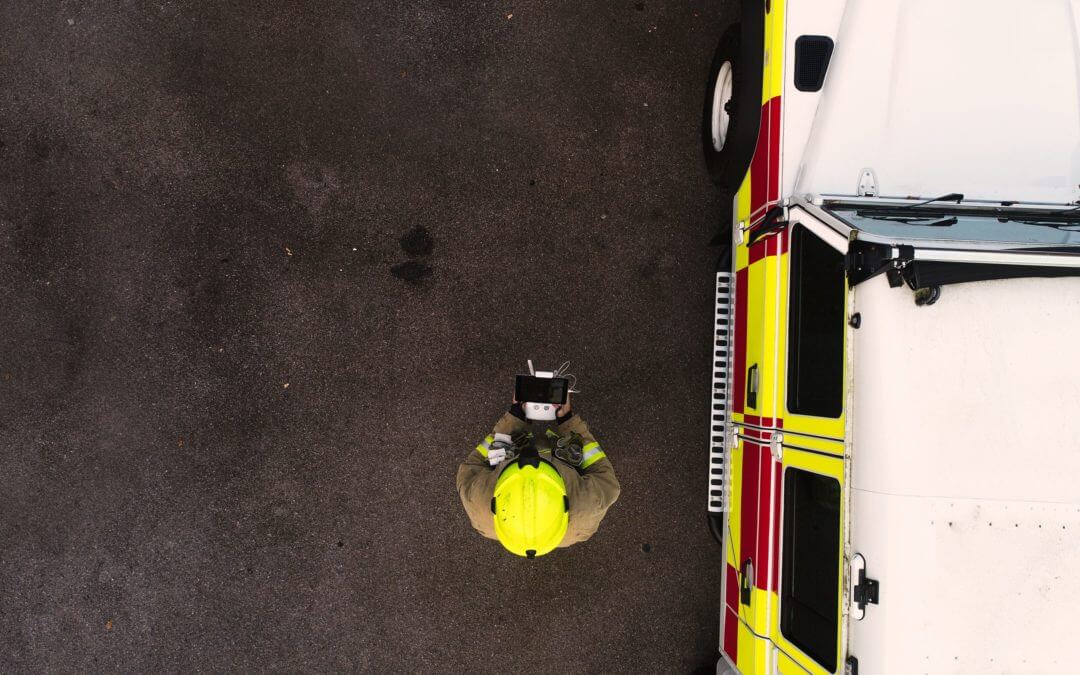Uncontrolled fires can cause severe destruction, devastating homes, obliterating the environment and cause severe risk to people.
Each time a raging fire threatens homes and lives, firefighters put themselves in harm’s way and combat the flames, and occasionally, lives are lost in the process.
Today, firefighters are combining existing resources with drone technology to safely and effectively manage fires. Fire departments in many countries have experimented with firefighting drones to put out fires in homes, as well as wildfires that threaten large swaths of land.
Read on to learn about four creative ways that unmanned air vehicles (UAVs/drones) support firefighting operations:
1- Bushfire Surveillance
Fires can spread quickly in the wild and are especially dangerous in windy, dry conditions.
Fire departments all over the world are often on high alert at certain times of the year when bushfires rear up with little warning.
For example, in late summer, the hills surrounding Los Angeles, California, are prone to bushfires. The local fire department recently used drones for the first time to survey the area and to predict where the fire would spread. Using drones simplified the process and allowed the fire department to stay one step ahead of the blaze.
2 – Water/foam dropping
Traditionally, fire departments used pilots in airplanes to drop water or foam to prevent fires from spreading – but the advent of drone technology means that fire departments can use remote operators who are far from the flames instead of placing humans in harm’s way.
K-MAX is a firefighting drone that packs a serious punch. It utilises everything from large bodies to swimming pools to fill its massive tanks and buckets, and can carry fire retardant, as well as other mixtures that firefighters can dump over large areas to stop fires from growing.
Another firefighting drone, ZHUN Walkera, is specially designed for fires in high-rise buildings. It’s fitted with an impressively strong fire extinguisher, night vision, and a highly-powerful camera.
3 – Aerial support
Water and manpower isn’t all that’s needed to fight fires – fire departments often have to transport large amounts of protective gear, food, drinking water and other supplies to remote areas during prolonged operations. UAVs excel at rapidly transporting items to support emergency response missions.
For example, Kaman’s “unmanned aerial truck” UAV can carry a payload of over 2,500kg pounds in and out of remote areas. This capability is invaluable during high-risk situations where human lives are already at risk.
4 – Situational awareness
Information is key to quickly addressing an emergency, and drones are superior tools for quickly relaying information back and forth.
During a fire, a drone can quickly survey an affected area and send key facts about the fire’s strength and scope back to the remote operator. From there, fire officials can use this raw data to create a plan for containing the blaze, and quickly see if any structures or people are in the path of the disaster.
Drones can also compile highly-detailed maps in a short period of time.
An example of this was the Camp Fire fires in California in November 2018, which was the deadliest and most destructive wild fire in California history. The fire started from an electrical fault, and left over 85 people dead. 20,000 buildings were destroyed, with over $16B in damage.
After the fire, the largest coordinated response of drones to an emergency ever was conducted. In an environment where there was widespread failure of mobile communications towers due to fire damage, and poor visibility from smoke, 16 drone teams were deployed to map the affected area.
Over two days, 518 flights were conducted to collect over 70,000 images (>500 Gb of data). The data was physically sent to DroneDeploy, who stitched all the images together to create an interactive map of the damage.
The map was used by first responders for situational awareness and for planning, and was also used to communicate the extent of the damage and to expedite insurance claims.
Conclusion
Fire departments around the world are embracing firefighting drone technology in an effort to protect personnel and keep the public safe. Fire, wind, water and other forces of nature will always pose a threat, but once again innovative drone technology is making the world a safer and better place to live.
If you need help implementing a strong, results-oriented drone program, schedule a consultation with Mirragin today at admin@mirragin.com.au.
Or to find out more about drones and their future in business, subscribe to our podcast.

